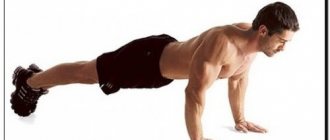Athlete technical training
Previous9NextTechnical training is aimed at teaching the athlete the technique of movements and bringing them to perfection.
Sports technique is a way of performing a sports action, which is characterized by a certain degree of efficiency and rationality of the athlete’s use of his psychophysical capabilities.
The role of sports equipment in different sports is not the same. There are four groups of sports with their characteristic sports techniques:
1. Speed-strength types (sprinting, throwing, jumping, weightlifting, etc.). In these sports, the technique is aimed at ensuring that the athlete can develop the most powerful and fastest efforts in the leading phases of the competitive exercise
2. Sports involving endurance (long-distance running). Here the technique is aimed at economizing the consumption of energy resources in the athlete’s body.
3. Sports involving the art of movement (gymnastics, acrobatics, diving, etc.). The technique should provide the athlete with beauty, expressiveness and precision of movements.
4. Sports games and martial arts. The technique must ensure high performance, stability and variability in the changing conditions of competitive struggle.
An athlete’s technical preparedness is characterized by what he can do and how he masters the technique. A high level of technical readiness is called technical mastery.
The criteria for technical mastery are:
1. The volume of technique is the total number of techniques that an athlete can perform.
2. Versatility of technology - the degree of diversity of technical techniques. These indicators of technical skill are especially significant in those sports where there is a large arsenal of technical actions - sports games, martial arts, gymnastics, figure skating.
3. Efficiency of mastering sports equipment, the proximity of the sports technique to the individually optimal option. The effectiveness of technology is assessed in several ways:
a) comparing it with some biomechanical standard. If a technique is close to biomechanically rational, it is considered the most effective;
b) comparison of the assessed movement technique with the technique of highly qualified athletes;
c) comparison of sports results with results in technically simpler tasks that characterize the motor potential of an athlete - strength, speed-strength, etc. For example, a run of 30 m is performed from a low and then a high start. The time difference will characterize the effectiveness of the low start technique;
d) comparison of the shown result with the expenditure of energy and effort when performing a motor action. The lower the energy costs, i.e. the efficiency of his movements, the higher the efficiency of the technique.
4. Mastery of movement techniques. This criterion shows how a given technical action is memorized and consolidated.
For well-mastered movements the following are typical:
a) stability of the sports result and a number of characteristics of the movement technique when performed under standard conditions;
b) stability (relatively small variability) of the result when performing an action (when the athlete’s condition changes, the opponent’s actions change in difficult conditions);
c) maintaining motor skills during breaks in training;
d) automation of actions.
Types of preparation:
General technical training is aimed at mastering a variety of motor skills and abilities necessary in sports activities. Special training is aimed at mastering special technical techniques inherent in a particular sport and sports specialization.
Objectives of general technical training:
1.Increase (or restore) the range of motor skills and abilities, which are a prerequisite for the formation of skills in the chosen sport.
2. Master the technique of exercises used as means of general physical training.
Objectives of special technical training:
1. To develop knowledge about the technique of sports activities.
2. Develop individual forms of movement technique that best suit the athlete’s capabilities.
3. Develop the skills and abilities necessary for successful participation in competitions.
4. Transform and update the forms of technology (to the extent that this is dictated by the laws of sports and tactical improvement).
5. To develop new variants of sports techniques that have not been used before (for example, the “Fosbury flop” in high jumps; the shot put technique using the principle of rotation, as in discus throwing; “skating” stroke in skiing, etc.).
In the process of technical training, a complex of tools and
sports training methods. Conventionally, they can be divided into two groups:
Means and methods of verbal, visual and sensory-corrective influence. These include:
a) conversations, explanations, stories, descriptions, etc.;
b) demonstration of the technique of the movement being studied;
c) demonstration of posters, diagrams, films, videotapes, etc.;
d) use of subject and other reference points;
e) sound and light leading;
f) various simulators, recording devices, urgent information devices.
Means and methods based on the athlete performing any physical exercises:
a) general preparatory exercises. They allow you to master a variety of skills and abilities that are the foundation for the growth of technical skill in your chosen sport;
c) methods of holistic and dismembered exercise. They are aimed at mastering, correcting, consolidating and improving the technique of a holistic motor action or its individual parts, phases, elements;
d) uniform, variable, repeated, interval, game, competitive and other methods that mainly contribute to the improvement and stabilization of movement technique.
The use of these means and methods depends on the characteristics of the technique of the chosen sport, the age and qualifications of the athlete, the stages of technical training in annual and multi-year training cycles.
Assessment of technical readiness. Control over technical readiness consists of assessing the quantitative and qualitative aspects of an athlete’s technique when performing competitive and training exercises.
Equipment control is carried out visually and instrumentally. The criteria for an athlete's technical mastery are the volume of technique, versatility of technique and efficiency:
· The volume of technique is determined by the total number of actions that an athlete performs during training sessions and competitions. He is controlled by counting these actions.
· The versatility of the technique is determined by the degree of variety of motor actions that the athlete masters and uses them in competitive activities. They control the number of various actions, the ratio of techniques performed to the right and left side (in games), attacking and defensive actions, etc.
· The effectiveness of a technique is determined by the degree of its proximity to the individually optimal option. An effective technique is one that ensures the achievement of the maximum possible result within a given movement.
· Sports performance is an important, but not the only criterion for the effectiveness of a technique. Methods for assessing the effectiveness of a technique are based on the realization of the athlete’s motor potential.
In cyclic sports, indicators of technical efficiency are especially important, since there is a very clear pattern - an inversely proportional relationship between the level of technical skill and the amount of effort, physical expenditure per unit of sports performance indicator (meter of distance).
Previous9Next
https://youtu.be/dOGPt8A_md8
Theoretical testing in physical education for grades 10-11.
Theoretical testing
SCHOOLCHILDREN IN PHYSICAL EDUCATION. Assignments for grades 10–11
Time: 35 minutes.
I. Tasks with a choice of one correct answer
1. What abbreviation corresponds to the name of the national Olympic committee in our country?
a) OKR b) ROK c) NOC d) IOC
2. In what year did the world community celebrate the 100th anniversary of the modern Olympic movement?
a) in 1980 b) in 1994 c) in 1988 d) in 2000
3. On which continent have the Olympic Games been held the greatest number of times?
a) Americab) Asia c) Europeg) Australia
4. In what sport did Mikhail Botvinnik, Bobby Fischer, Anatoly Karpov, Vladimir Kramnik, Sergei Karjakin and Magnus Carlsen excel?
a) chess b) athletics c) biathlon d) swimming
5. What types of motor abilities are affected by jumping exercises?
a) flexibility b) endurance
c) on speed-strength abilities d) on the ability to maintain balance
6. What is a violation of the rules called in basketball?
a) jogging b) running c) running d) running
7. Which physical exercise has the longest phase of flight?
a) jumping b) running c) walking d) climbing
8. Which load mode corresponds to a heart rate from 140 to 160 beats per minute?
a) health b) developing c) supporting d) training
9. What sport does not have a goal?
a) curling b) hockey c) floorball d) water polo
10. Which serving method is the most common in volleyball?
a) bottom direct feed b) bottom side feed
c) top direct feed d) top side feed
11. How many players are on the football field during a game?
a) 11 b) 20 c) 25 d) 22
12. Which of the following is NOT a posture disorder?
a) kyphosis b) scoliotic posture c) hyperlordosis) “round back”
13. Which of the control exercises is NOT included in the GTO standards?
a) throwing a ball b) jerking a weight c) throwing a grenade d) shot put
14. In which sport is swimming one of the disciplines?
a) biathlon b) skiathlonc) duathlon) triathlon
15. Choose phrases that reflect the essence of athletics.
a) athletic equipment is required for athletics
b) insurance is required during athletics exercises
c) athletics is used as a means of general physical training
d) athletics is a seasonal sport
II. Tasks in which you need to complete a statement or answer a question
16. On the Peloponnesian Peninsula in the village of Olympia, at the foot of the Alpheus River, they originate...? _____________________________________________________
Technical sports. Types and features. Equipment
Almost any modern sport requires certain equipment and equipment. For example, football involves a ball and a goal; basketball - a ball and a special ring; tennis - courts and rackets. The list goes on. But a certain group of disciplines is related to the management of sports vehicles or equipment, for which special areas are equipped. This combination is called technical sport.
What is technical sport?
The main distinctive feature of this group of disciplines is the presence of interaction between the athlete and technical devices of varying degrees of complexity. These are cars, motorcycles, airplanes, paragliders, water skis and much more. Technical sports involve competitions where athletes demonstrate their skills in controlling technical devices, their physical fitness, ability to think strategically and tactically, etc.
Each of the technical disciplines, although not all of them are included in the program of the Olympic Games, is of global importance, and therefore the rules of the competition are regulated by the relevant international sports organizations.
Types of technical sports
There are a huge number of them.
The most famous of them:
Motorsport
It involves overcoming a track in cars at speed.
For competitions, vehicles of two categories are used here:
- Cat. "A" - production cars.
- Cat. "B" - racing. These cars are produced only for participation in competitions. For such vehicles, uniform operating rules and requirements for their weight, design, number of seats, engine, exhaust system, etc. are established.
Motorsport includes the following disciplines:
- Circuit racing is a competition on a closed track that involves completing a certain number of laps against time.
- Rally - driving in a straight line from point A to point B, where victory goes to the one who arrived at point B in less time.
- Trophy is a cross-country off-road race.
- Autocross - overcoming a circular track with a dirt surface.
- Car slalom is maneuvering at speed along a distance marked by stands. In this case, participants must meet the allotted time.
- Autotrial - overcoming short but very difficult routes. Often, routes are specially equipped for competitions.
- Drag racing is a straight-line competition for maximum acceleration.
- Drifting is a car race that involves moving in a controlled drift.
- Karting is a high-speed race on special vehicles (karts) that have only a frame, a motorcycle engine and a driver’s seat.
- Survival racing is an extreme competition on a ring track, where the regulations provide for the ability to push your opponents out of the distance.
Motorsports
This is a technical sport where participants cover a set distance on motorcycles. The tracks can be circular or open, and either requires permission from the relevant motorsports authority.
The appearance and design of motorcycles used for competitions are strictly regulated by international rules for each specific discipline.
These are special machines of small-scale production, characterized by the following characteristics:
- Powerful engine designed for driving on smooth, paved roads.
- The presence of lining to reduce air resistance.
- Special tires on the wheels to ensure maximum grip on the road.
In motorsports there are a number of competitive programs, for example:
- Motocross is a classic program that involves racing on a specially prepared circular track with natural or equipped obstacles in the form of steep climbs, descents, turns, ditches, sand embankments, etc.
- Road racing is a race at high speeds on high-quality asphalt surfaces where the distance exceeds 3 km.
- Motorcycle trial - overcoming a track with natural or artificial obstacles, where participants are prohibited from touching the obstacles with parts of their body.
- Speedway - overcoming an elliptical track up to 400 m long, without obstacles, with two left turns and two straight sections, as well as with a variety of surfaces.
- Motorball is a football match between teams of 6 participants each, where everyone except the goalkeepers plays on motorcycles.
Powerboating
This is a technical sport that includes speed competitions and tourism on various vessels. Appeared at the beginning of the 19th century. in Australia and the USA. The International Powerboat Union was established in 1922, but the discipline reached its peak of popularity after the First World War. Today, in regions with access to the sea, regular competitions are held that attract large numbers of fans.
The following types of vessels are most often used for competitions:
- Motor boats.
- Sports jet ski.
- Gliders.
The first two types of boats have an outboard engine in their design, and the third is equipped with a stationary one. At tournaments, all ships are divided into groups according to engine size, design features and other characteristics. All watercraft receive certain designations.
The competition programs include:
- Circuit racing.
- Parallel slalom.
- Freestyle free.
The participants’ task is to cover a distance of a certain length or including a set number of laps in the minimum time. Freestyle free involves demonstrating a variety of acrobatic tricks on your boat.
Aviation sports
Technical sport, which includes disciplines related to the control of aircraft of various types. These include:
- Helicopter sport is a competition between athletes and crews on helicopters, consisting of demonstrating special exercises and setting flight distance records on a straight and closed track, as well as altitude and speed records.
- Parachuting is a competition held with the use of parachutes, carried out according to different programs: landing accuracy, demonstration of various acrobatic tricks in the air (freestyle), group acrobatics, etc.
- Hang gliding is the control of an aircraft, which is a wing filled with air. The competition involves setting records for flight range, as well as time spent in the sky.
- Paragliding - paragliding.
- Gliding sport is a competition where athletes cover a distance on gliders. These are special devices that do not use traction. The flight range is from 10 to 100 km or more. The classic gliding program involves flying along a given route at speed.
- Airplane sports are competitions on airplanes held in two areas;
— setting records for speed, altitude, range, flight duration, and load capacity on aircraft of any type; — competitions in flights along the route, in landing accuracy and in aerobatics using 1 and 2-seater sports aircraft.
- Aeromodelling sport . A discipline where athletes compete in the design and manufacture of models of various aircraft and in their control. Control competitions are held for speed, range, flight duration and aerobatics. The International Federation of Aeromodelling Sports keeps records of achievements in aircraft modeling.
Shooting sport
In a broad sense, this technical sport involves shooting from firearms and pneumatic weapons at stationary and moving targets.
Varieties:
- Bullet shooting is a competition using rifled weapons (pneumatic small- and large-caliber rifles and pistols), the goal of which is to hit stationary and moving targets in a shooting range from a prone, standing, or kneeling position.
- Skeet shooting is the defeat of flying clay pigeon targets fired by a special machine. Shooting is carried out in open areas using smoothbore rifles. Air guns are not used.
- Benchrest is a precision shooting competition.
- Varminting is a type of rodent hunting where participants compete in shooting for accuracy from a long distance using a small-caliber rifle.
- Sniping is a shooting competition for accuracy from different positions over a limited period of time, held in field conditions. The weapon is a sniper rifle.
Separately, archery should be highlighted. Competitions are held for accuracy; the participant or team with the most points wins. Shooting is carried out both in open areas and in halls. Participants release 3 or 6 arrows in series. Archery targets are made of paper, onto which multi-colored concentric circles are applied, and mounted on shields.
Luge
Winter Olympic type of downhill competition on single or double sleighs on specially equipped tracks. The winner is the participant (team) who covers the distance in the shortest time. The weight of the sled and its design are regulated by international rules. There are restrictions regarding the temperature of the sled runners, the weight of the athlete, and his equipment.
The luge track consists of a chute and bends covered with ice. It is being built for competitions according to a special project.
Bobsleigh can be considered one of the varieties of luge. This is a speed run on a controlled sled called a bob. The crew's task is to accelerate the bob so as to cover the distance faster than other teams. At international competitions, two- and four-seater sleds are used.
Technical sports continue to develop, and new types based on technical progress appear in it. Thus, a discipline such as eSports —team competitions in computer games—is gaining popularity. Tournaments are often broadcast on television, attracting huge crowds. The prize pools here are very large - up to several million dollars.
Some types of technical disciplines require obtaining appropriate permits and licenses. Thus, various types of races oblige athletes to obtain a license to participate in competitions of varying degrees of difficulty. And in sports shooting you need to obtain permission to store rifled and smooth-bore weapons.
Related topics:
- Cycling. Types and description. Equipment and equipment. Peculiarities
- Sailing (Yachting). Types and rules. Features and equipment
Sports and technical sports
Let's start, perhaps, with one of the most common types familiar to us - motor sports, or, in other words, motor sports.
It requires very large investments. This is one of the most expensive sports at the moment. It is divided into several categories: car racing, motocross and rally. Despite the inaccessibility of this species, it is gaining momentum every year.
Mental-applied sports
Engineers have always competed to see who can assemble this or that model faster or build this or that object. Over time, it gained official significance and is now characterized as separate sports.
There are three most popular applied sports:
- Shipbuilding takes its origins from the beginning of the 20th century. At this time, there was a trend in Europe to exhibit tabletop models of their ships. Since 1963, the Unified All-Union Commission included this sport in its sports classification, and a year later the All-Union Federation of Ship Modeling Sports was created.
- Aircraft model - takes its roots in the late 19th and early 20th centuries. According to historical information, the first models were built before 1917. But it was only able to establish itself as a separate sport and earn a place in the sports classification in 1926. Later, the International Aeronautical Federation established technical requirements and rules for organizing competitions. Since 1953, sport has been included in the Unified Sports Register of the USSR and has become a valid type of sports activity.
- Self-propelled - began its existence in the European open spaces in the 1940s, but appeared on the territory of the USSR as early as 1956. Like ship-modeling sport, in 1963 it was included in the All-Union classification, and on the initiative of the government, a special body was created - the USSR Automobile Sports Federation, which led and controlled this sport.
If you look closely, we come across something similar every day. On the territory of the Russian Federation, technical sports are intensively developing every year. Since they are gradually beginning to exist in the programs of the Olympic Games.
Airplane sports
As you know, most of the discoveries related to the sky belong to the French. It was they who, at the beginning of the 20th century, decided to begin promoting competitive flights over Paris. The result was the International Aeronautical Federation, created in 1905. This sport did not find a response in our country, and only half a century later, in 1959, the USSR Aviation Sports Federation was formed.
These were the most unusual technical sports that are only gaining popularity in the Russian Federation.
Powerboating
The first mentions of this sport date back to the beginning of the 20th century in American and Australian sources. But it gained its popularity after the First World War. The exact date of foundation of this sport is considered to be 1922. Year of creation of the International Water Sports Union. Today it is very popular among residents of the coastal regions of our country. Sailing competitions are held annually, attracting a huge number of observers and fans.
Concept of technical sports
There are many definitions of this concept, but among them all there is one very precise one. It will help you understand briefly what this term means.
Technical sports are those that are associated with the management of technical sports equipment, the design and construction of sports models. In general, these are sports competitions that use a technical component in their segment.
For example, an archer. He cannot do without a quiver and arrows inside it, as well as a bow. Or a shooter, without an air rifle his sport makes no sense.
We understand the concept of technical sports. Let’s look at where and to what sport this concept can be applied. Let's take a closer look at some of them.
Parachuting
The first person who dared to take this rather risky act was the Frenchman Andre-Jacques Garnerin. In 1797, he made the first jump from 700 meters using a tethered parachute of his own design. The first woman to conquer this sport was Andre-Jacques' sister Elizabeth. Since the beginning of the 19th century, parachuting has become popular throughout the world. Without him, not a single military parade or display was held. June 26, 1930 in the USSR is considered to be the day of the creation of parachuting.










